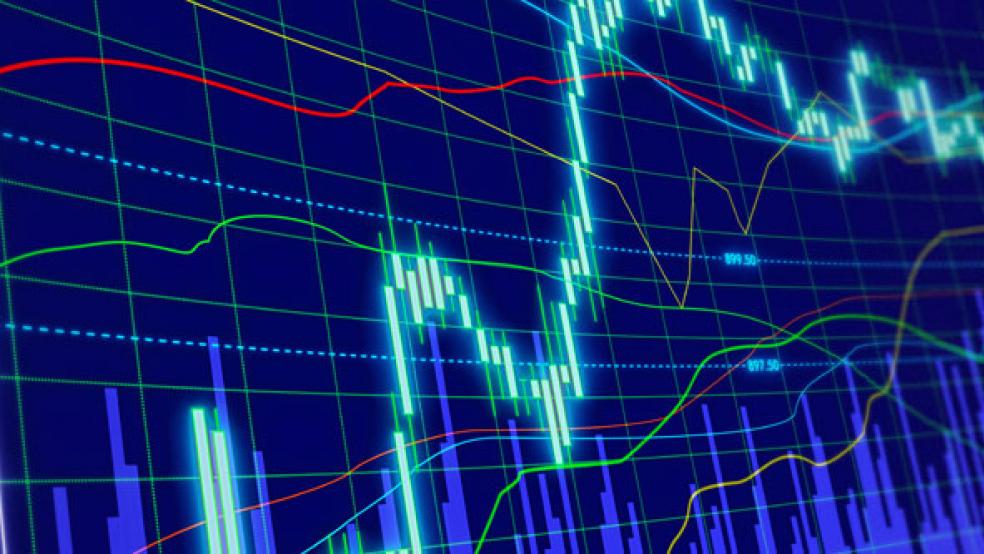After a remarkable start to the year, with the U.S. stock market racing higher almost daily, the Standard & Poor’s 500-stock index and Dow Jones industrial average both ended Friday with their worst weeks of the year, with the S&P 500 posting its first weekly loss. Admittedly, the red ink was more of a puddle than a sea, but it may be an indication that investors are – or will – give some sober thought to the risks that lie ahead after an advance of more than 20 percent since October.
Analysts who focus on quantitative or technical indicators still like the prospects for the Dow Jones Industrial Average and the S&P 500 Index. Howard Silverblatt, senior index analyst for S&P Indices, pointed out last week that of the eight years on record that had a better start than 2012, only one of them ended with a loss for the S&P 500 – and that was back in 1934. In 1987, the S&P 500 managed to eke out only a 2.03 percent gain for the year despite a 16.1 percent opening month, but we can blame that on the October crash that turned stocks into wallpaper for many investors.
RELATED: Cash-Rich Companies Pump Up Dividend Payouts
Some analysts argue that the beginning of the year is a signal of even better things to come, as was seen in 1975, when an early 15.2 percent jump in the value of the S&P 500 set the stage for what ended up as a 31.6 percent gain by the end of that year. “If investors focused on the fundamentals and discounted the daunting headlines, stock market values would be substantially higher,” argued Jack Ablin, chief investment officer for Harris Private Bank, in a memo to clients last week. The P/E ratio has remained below its 50-year average for longer than has been seen since about the time of that 1975 blockbuster stock market gain; indeed, the S&P 500 has languished below its long-term average of 16.4 for more than18 months. “That is the longest valuation dry spell since the 13-year stretch that began in 1973,” Ablin points out.
Even given the rally in stock prices in recent months, are investors being irrational? Are they ignoring the hefty profits, the prospects of an economic recovery and the near-certainty that they won’t be making money off fixed income investments for another two years, thanks to the Fed’s promise to keep short-term lending rates at nearly zero until 2014? Or, after a “lost decade,” followed by too many false dawns – remember that last year, stocks and other “risk on” investments racked up gains in the early weeks of the year, only to relinquish them in the summer – are investors being cautious and taking money off the table on days like Friday, when rioting in Athens reminded the world of the economic perils that still hover on the horizon?
It all comes down to how sustainable corporate earnings are throughout the year. For now, a surprisingly large number of S&P 500 members have posted results for the fourth-quarter that were far better than expected. Anyone wondering why the financial sector – the chief laggard in 2011 – is doing so well that its performance is ahead of that of the broad index this year should simply recall that more than two-thirds of the companies in that group reported earnings higher than analysts had forecast – a recipe for big market gains as long as there is no macroeconomic or geopolitical news to distract investors.
What matters to the future direction of stock prices – and what will determine whether it’s too late for investors who’ve been hovering on the sidelines to jump aboard the bandwagon – isn’t just what happened in the fourth quarter but what corporations expect to happen, and then what actually materializes, in the first quarter of 2012 and beyond.
So far, that picture remains muddy. True, some companies remain upbeat – CVS Caremark (CVS) and Hartford Financial (HIG) recently issued upbeat guidance – and others, like Apple (AAPL), now seem on a growth trajectory that only an act of God could derail. But others are more cautious, and as of late last week, 52 companies in the S&P 500 had issued negative guidance, while only 20 had revised their outlook to be more bullish, according to data from Thomson Reuters.
In most cases, simply doing OK is just fine. That would allow the P/E ratio for the S&P 500 to creep northward, back towards its long-term average; the January and early February rally would prove to be simply the first stage of a longer-lived bull market. That’s particularly true since bond yields are going to remain at rock-bottom levels.
Ablin illustrated the massive valuation gap between stocks and bonds that has emerged by pointing to GlaxoSmithKline (GSK), whose six-year bond offers a 1.79 percent yield to maturity, while its stock offers a 4.81 percent yield and trades at only 12 times earnings – adding up to an earnings yield of 8.3 percent. Same company; same fundamentals. “There are dozens of examples like that in the market today,” Ablin adds. (He isn’t recommending Glaxo; simply providing it as an example of out-of-whack valuations.)
For now, expect the stock market’s fate to be tied to headlines out of Europe (and to some degree, China) on days when those headlines are dim and depressing, but to respond to the relatively bullish valuation gap on days when the global picture is generally quiet. The odds are high that the ride from now to the end of the year will be a very bumpy one, but they also favor it ending with some not-too-shabby stock market gains.



